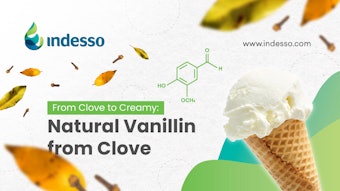A new European Food Safety Authority (EFSA) study has concluded that p-mentha-1,8-dien-7-al, a flavor material commonly called perilla aldehyde (FEMA# 3557, CAS# 2111-75-3), has genotoxic effects on animals. Perilla aldehyde occurs naturally in citrus fruit peel and is produced in what EFSA deems “limited quantities.” Perilla aldehyde is applied to products such as baked goods, puddings, meat products, and alcoholic and nonalcoholic drinks, in which the ingredient imparts a woody, spicy, citrus flavor character. It can also support flavor profiles such as apple, citrus, grapefruit, orange, spearmint, peppermint, lime and blackberry.
Study Highlights
In 2002, an international evaluation of perilla aldehyde as a food flavoring found it to pose “no safety concern at current levels of intake.” In 2008, the European Commission asked EFSA to re-evaluate this substance as part of the evaluation of all food flavorings authorized for use in the EU. The flavoring industry first submitted data for this flavoring substance in 2012 following an EFSA request. This current EFSA study follows an earlier 2013 notice from the organization, which cited concerns about the safety of the ingredient.
The 2013 notice detailed EFSA’s experts’ concerns that the substance was potentially genotoxic. At that time the organization requested an additional study to determine the potential effects on the liver and stomach. The current EFSA opinion, based on a study submitted in 2014, concludes that perilla aldehyde induces DNA damage in the liver.











